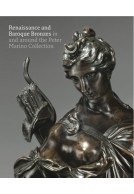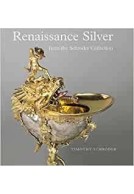Catalogue of Glass & Limoges Painted Enamels (Hardback)
Pages: 400
Illustrations: 440 col. illustrations
ISBN: 9780900785856
Published: 11th October 2011
(click here for international delivery rates)
Order within the next 10 hours, 6 minutes to get your order processed the next working day!
Need a currency converter? Check XE.com for live rates
The collections of glassware and Limoges painted enamels acquired by Sir Richard Wallace may at first glance seem unlikely bedfellows. Yet both are ‘arts of fire’ and both are ‘vitreous art’, albeit with rather different aesthetic ends. Moreover, the collections of glassware and painted enamels at the Wallace Collection are broadly speaking contemporaneous in date of manufacture. Whereas all of the painted enamels in the collection were made in Limoges over a relatively short period from the late fifteenth to the seventeenth centuries, much of the glassware was made in Venice or elsewhere on the continent in Venetian style (façon de Venise) at around the same time. Glassware from other traditions includes a mid-fourteenth-century Islamic mosque lamp and early seventeenth-century Bohemian enamelled glasses. All the glass and Limoges painted enamels in the Wallace Collection are published together for the first time.There are approximately sixty glasses and thirty painted enamels in the Wallace Collection. Preparation of this catalogue has included research into their production, function, and the socio-cultural context in which they were made, while comparative examples have been identified and attribution and dating reassessed in the light of recent developments in scientific analysis.Techniques from the so-called ‘golden age’ of Venetian glass-making are well represented, including vessels in mould-blown, enamelled and gilt and vetro a filigrana glass. Highlights include a calcedonio goblet, a trick-glass tazza and a chalice-shaped goblet enamelled with the Crucifixion. The Islamic glass mosque lamp, an early seventeenth-century Bohemian beaker (Humpen), evocatively enamelled with scenes of merrymaking and intended for welcoming guests, and an exquisite goblet from a magnificent dressing-table service made in Augsburg in the later eighteenth-century provide fascinating glimpses into very different cultures.














